|
Tracker School Caretaker Classes
|
Nov 2001 Caretaker Class
Page 20 of 20
|
|
|
|
Saturday Nov 3 Morning
Caretaker Walk with Tom Brown Jr.
(Page 3 of 3) |
|
|
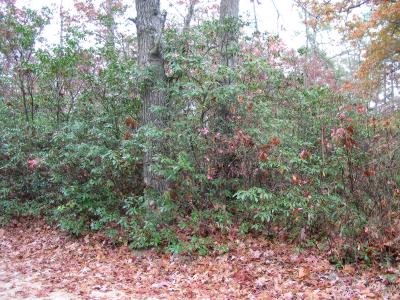 |
Station 9:
- Here the road is lower than the surrounding
land. This causes a pooling of water on the road here.
- If the road were built up, the water would
simply run off towards Station 8, thus exacerbating the problem
there. Therefore nothing much can be done here about the
road level.
- This patch of shrubbery shown has very low
diversity. That could be resolved by thinning out the laurel and
planting lower-growing shrubs, such as blueberry and sweetfern,
etc.
- Presently, there is little cover for animals
with the exception of deer. Rabbits are easily seen through the
lower branches by predators. Planting of lower shrubs would
rectify this problem, and provide shelter for small animals.
|
|
| |
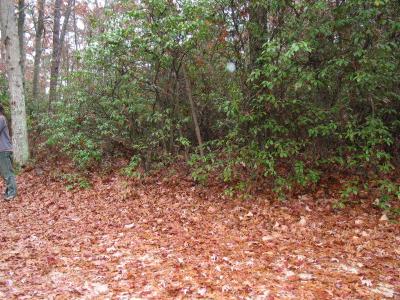 |
Station 10:
- This clump of laurel is all the same age.
Therefore it is susceptible to blight.
- In any case, the entire thicket will all die
more or less at once, since it is all the same age.
- There is a bit of a dark feeling here - this is
due to the presence of the problem here.
|
|
| |
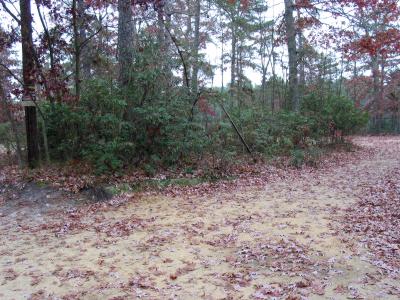 |
Station 11 (photo #1):
- This clump of trees is an island in a large
road intersection.
- This has resulted in an isolated habitat, of
little use to animals except as a stopping point as they try to
cross the vast area of road (see below).
- This island needs to be rejoined to the rest of
the forest.
- This road, which is the source of so much of
the problems here, cannot be closed, given that this is a Boy
Scout Camp, and there must be access for emergency vehicles.
|
|
| |
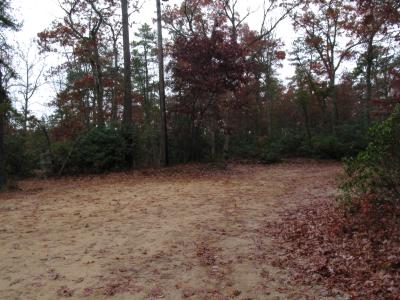 |
Station 11 (photo #2):
- This picture is to the left of the above one.
- As can be seen here, there is a rather large
road intersection here, much larger than necessary.
- A solution might be to narrow or close off part
of this intersection, thus allowing trees and shrubs to grow in.
- Not visible in this photo is the use of a tree
to naturally narrow down this intersection. More could be
planted for this purpose.
- This station (and the next) illustrate the need
to always think on a "big picture" level - both the
Nature and the human level.
|
|
| |
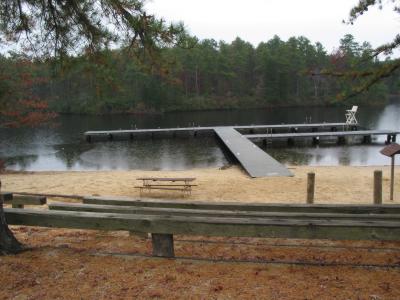 |
Station 12:
- The beach. A completely artificial environment.
- Again, this beach will not be removed, since
this is a Boy Scout Camp, and they want their recreational swim
area, including the beach.
- The sand on the slope washes into the lake with
each rain. Note the colour of the water and the lake bottom.
- A solution would be to terrace the sand slope,
in order to slow down the erosion.
|
|
| |
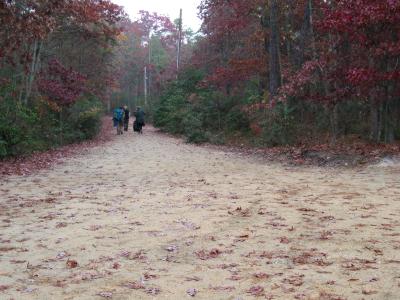 |
Station 13:
- This intersection is actually a continuation of
the one shown at Station 11.
- Just to the left is a low area where water runs
off through the forest, to reappear at the road at Station 3 as
it runs under the culvert there.
- Thus, in one sense, this spot is the source of
many of the problems with the road and the whole area.
- This shows how a problem in one place can
become a problem over a much wider area, illustrating the
concept of concentric rings.
- If the problem is fixed here, the same
principle of concentric rings ripples the effect of the solution
out to fix other problems elsewhere.
|
|
| |
|
= This was the end of the
class =
|
| |
|
Previous
Next (Update #1 May 2003) |
|
|
| |
| |